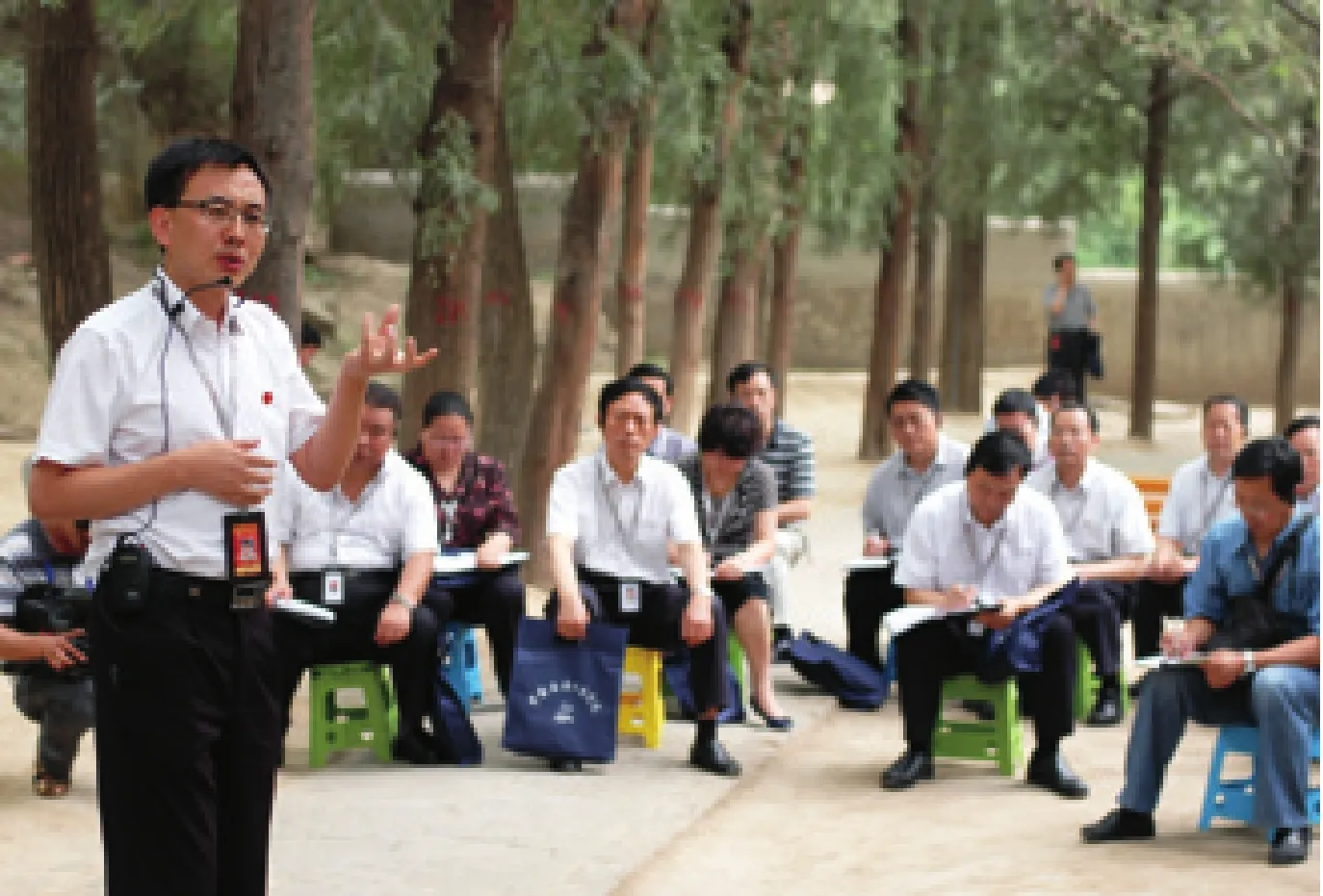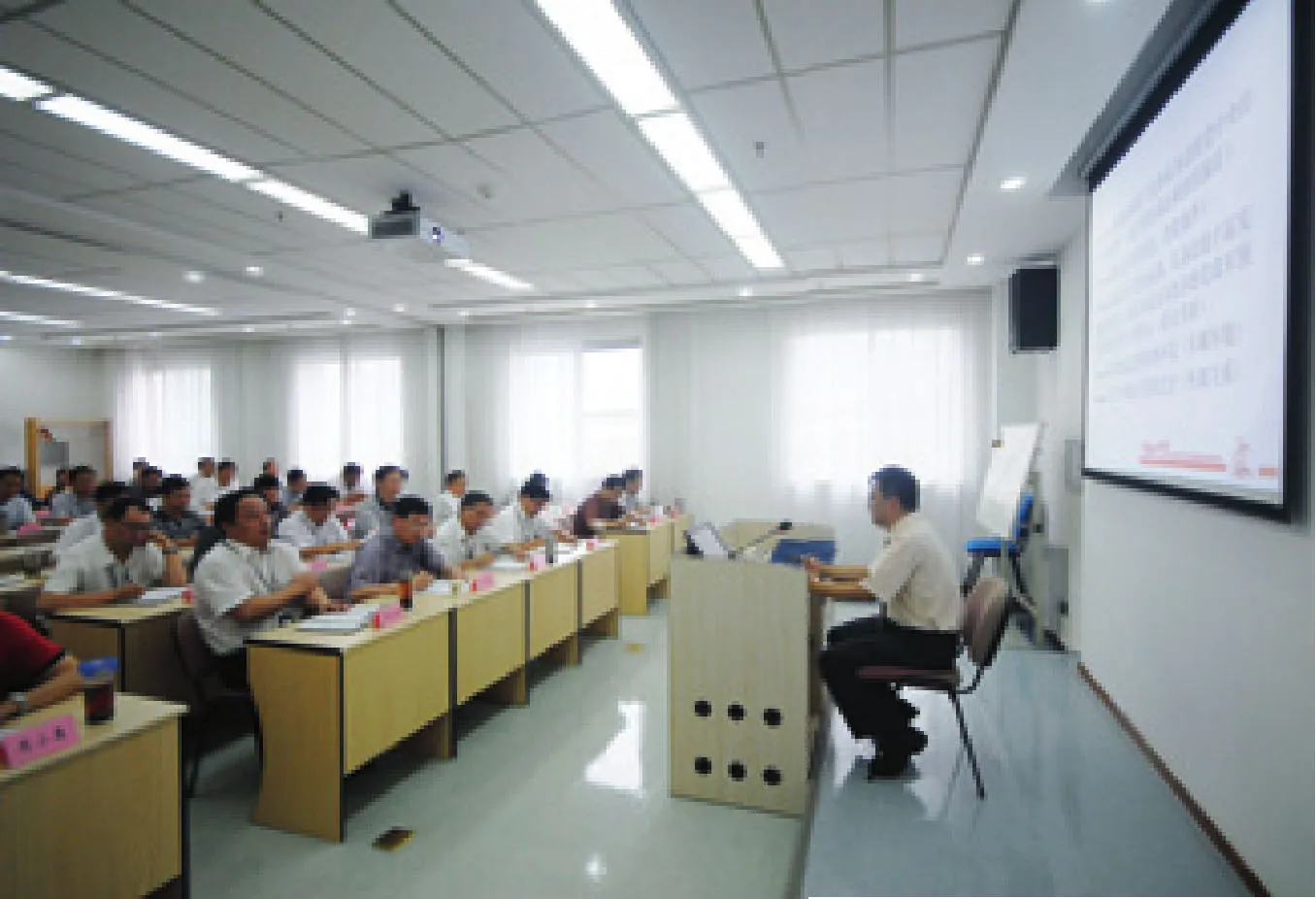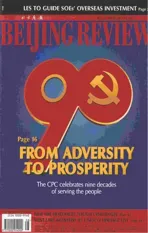Red Base, Red Training
2011-10-14ByYUANYUAN
By YUAN YUAN
Red Base, Red Training
By YUAN YUAN
Yan’an, a cradle of Chinese revolution, continues to inspire new generations of Communist Party of China members

ON-SITE TRAINING: Ma Zhaoqi gives a lecture on how to be a good Communist to students at CELAY in Yangjialing Village in Yan’an, Shaanxi Province, on June 17

INTERACTION: Lu Weidong and his students at CELAY exchange ideas in a class discussion on June 17
On June 17, a group of middle-aged people carrying small portable stools circled around a lecturer at Yangjialing Village in Yan’an, Shaanxi Province.
In Yan’an, the city famed as a cradle of Chinese revolution, such scenes are common. This group of people consists mainly of students from the China Executive Leadership Academy Yan’an (CELAY), a key training school established by the Communist Party of China (CPC) six years ago. They are mostly middle-ranking offcials who visited the city to attend the academy’s 10-day training sessions. Visits to revolutionary sites in Yan’an were an integral part of the training.
“That is the unique training method of the school,” said Ma Zhaoqi, a lecturer at CELAY. “We take students to historical sites to experience the original environment of the revolution.”
On June 17, Ma lectured his students on an article by Liu Shaoqi, President of the People’s Republic of China (PRC) in 1959-68, on how to be a good Communist.
“In his article, Liu explains in detail how to get along with the masses,” said Ma, who mixed stories from Liu’s life into his lecture.“He lived a very simple life. Especially after the founding of the PRC, he even distributed his food rations to other people.”
In addition to Yangjialing Village, where Mao Zedong made his well-known remarks “all reactionaries are paper-tigers” to U.S. journalist Anna Louise Strong, trainees are also taken to other revolutionary sites. The Date Orchard, where the Secretariat of the Central Committee of the CPC operated in the late 1930s and early 1940s and the Pagoda Hill, a must-see landmark in Yan’an, are on most itineraries.
“This method is effective,” said Lu Weidong, another teacher at CELAY. “Since most of the students in the school now are in their 40s, 50s or even 30s, it is necessary to show them how the Party triumphed over adversity.”
In order to make its training programs more vivid, the school also invites some elderly residents in Yan’an to contribute.
Liu Yu is one of them. “I have been living in Yan’an for almost 60 years,” Liu said.“I experienced almost every important event in the Party’s history that happened here. I don’t use textbooks in the class but students say my lectures are very interesting since I have a lot of stories to tell.”
“It is my first time here,” said Chen Yingxian, Deputy Director of the Bureau of Culture and Science of the Ministry of Culture. “It feels really different when you stand at this former revolutionary base of the CPC. The old generations of revolutionaries lived in very shabby houses and didn’t have enough food. It is a miracle that they were able to succeed under such conditions.”
“It is quite a fresh new experience compared to my routine work,” said Zhao Wei, Deputy Director of Insurance Regulatory Commission of Guangdong Province.“Visiting the former residences of Party leaders such as Mao Zedong and Zhou Enlai, I was astonished to see they used to live in such harsh conditions. Although I’ve learned about the early days of revolution from books and TV programs, it is still very different when you are really in there.”
Living in the 10-square-meter dormitory in the school with simple meals every day, Zhao said he really enjoyed his stay at the academy. “Sitting in the classroom again makes me calm down and think clearly. It is a very precious experience. I always felt upset when I came across diffculties at work. But compared to the hardships that older generations of revolutionaries had to work through, our diffculties are minuscule.”
“It is very important for Party members to have memories of history, as they are the treasure of the Party. But greater numbers of young people, with better and better living standards, tend to ignore that,” said Lu. “Our spirit in the new era would be like water without a source or a tree without roots if we don’t value revolutionary history and draw strength and inspiration from those days.”

PHOTOS BY WEI YAO
